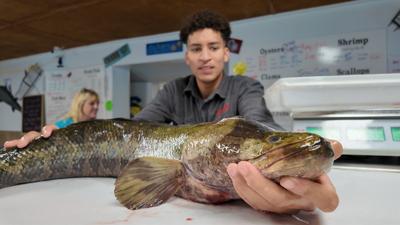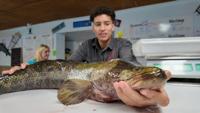CHESAPEAKE BAY - The northern snakehead fish, now known as the Chesapeake channa, has long been established in the Chesapeake Bay. But new research from Maryland scientists reveals just how much of a threat the invasive species poses to local ecosystems.
The presence of snakeheads in the bay is no surprise.
"They were first found in 2004 in the Potomac River. From there, they spread to other systems within the Chesapeake Bay watershed, and it was relatively quick. And we do know they were introduced illegally on the Eastern Shore," said Dr. Joe Love, a scientist with the Maryland Department of Natural Resources.
Love said the species is particularly resilient, with research showing it can spawn twice a year, producing twice the eggs, and can reproduce in a variety of environments.
"So we just finished up some research on the impacts of northern snakehead in our ecosystems. And that is new not only for Maryland but also the whole country," Love said.
The findings suggest the snakehead is affecting local fish populations.
"We did observe changes in relative abundance in white perch and sunfish, some of its popular prey items," Love said.
While most commercial watermen do not target sunfish, the decline of native species remains a concern.
"Because it's something that's not supposed to be here and it feeds on things that our crabs and fish would be feeding on," said Robert Brown, president of the Maryland Watermen’s Association.
State officials encourage fishermen to catch and consume the species before it causes further disruption.
"It's very delicious. I mean, you can clean it and take it home. It's probably the ugliest fish you've ever seen in your life, but it's very tasty," Brown said.
Maryland DNR scientists say there is no catch limit on the Chesapeake Channa. In one study area near Cambridge, researchers observed a decline in 19 of the 22 fish species they monitor following the introduction of the invasive species.


